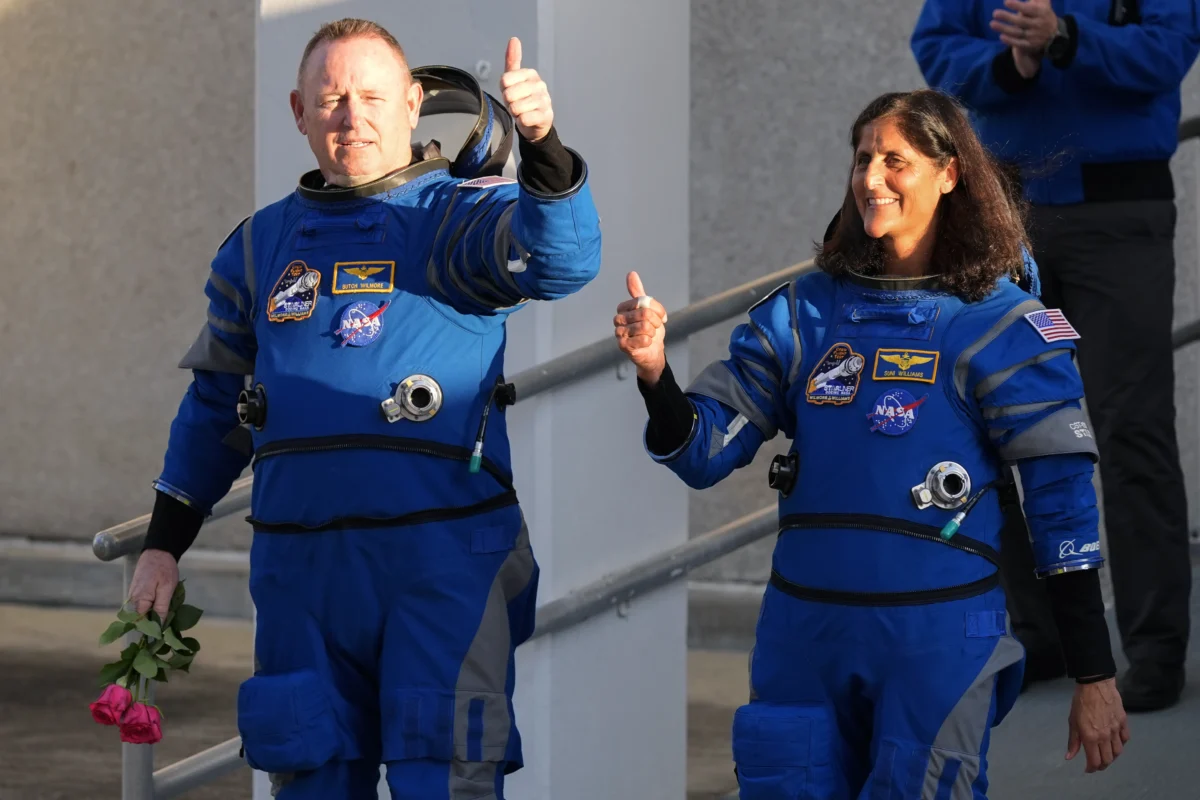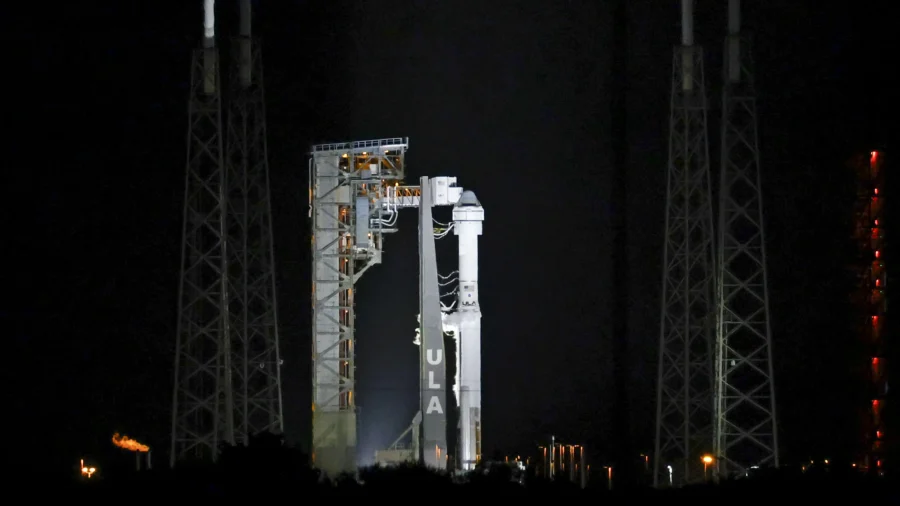NASA’s Boeing Crew Flight Test to the International Space Station was scrubbed Monday night when an oxygen relief valve malfunctioned during a preflight observation on the United Launch Alliance Atlas V rocket Centaur second stage.
NASA announced in a blog post that the mission would now be delayed until at least Friday while the valve is tested again and possibly replaced, if needed.
Astronauts Barry “Butch” Wilmore and Suni Williams were strapping in for the launch when they learned it was scrubbed for now.

NASA’s blog said they returned to the astronaut’s quarters to await the resolution of the problem.
The new launch would take place at 9 p.m. EDT on Friday if the valve is determined by data analysis to be safe.
If the valve needs to be replaced, the rocket would need to go back to ULA’s Vertical Integration Facility for repairs, and the launch would be delayed to Sunday or later in the week.
The valve problem has happened before and was not unknown to engineers. The pressure relief valve rapidly opened and closed repeatedly in an attempt to seal itself, which caused a humming sound engineers could hear from the launch pad.
Previously, on unmanned satellite missions, the problem was resolved through a workaround, but the procedure is different for a manned mission.
“What you would typically do is activate solenoid that forces the valve closed, cycling the valve, if you will … and it almost always stops,” said Tory Bruno, CEO of United Launch Alliance. “Once we had the crew off, we cycled the valve, and it stopped buzzing.
“If this were a satellite (launch), that is our standard procedure, and the satellite would already be in orbit,” Mr. Bruno said. “But that changes the state of the fueled Centaur, and we don’t do that when people are present. And so our flight rules called for us to scrub and to take the crew off before we cycled that valve.”
The valve maintains the right amount of pressure in the liquid oxygen tank and is made to open and close safely 200,000 times.
The engineers need to determine how many times the valve has cycled and whether it would be safe for the launch.
“I promised Butch and Suni a boring evening,” Mr. Bruno said at a news briefing. “I didn’t mean for it to be quite this boring, but we’re going to follow our rules, and we’re going to make sure that the crew is safe.”
The Starlight is Boeing’s attempt to keep up with SpaceX’s Crew Dragon, which has already carried 50 astronauts and civilians into orbit and made 12 flights to the space station.
NASA is funding both operations to back each other up and ensure that it would be able to get to the space station even if one of them was grounded.
The Atlas V has made 99 flights safely, and NASA calls it “an extremely reliable rocket with a perfect launch record.” It can get the Starliner into a preliminary orbit in only 15 minutes.
The test flight is meant to ensure that the Starliner can dock with the space station and test the capsule’s manual controls on the way back to Earth.
Wilmore and Williams will spend just over a week with NASA astronauts and cosmonauts on the space station before returning. If the test flight is successful, it will be certified for routine crew rotation flights to the space station on a yearly basis.


